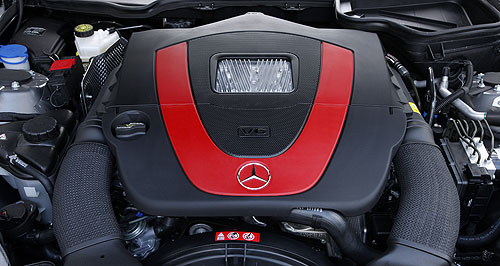Make / Model Search
News - Mercedes-BenzGeneva show: Benz to go back to inline sixesHit for six: Mercedes-Benz will revert back to using inline six-cylinder engines instead of V6s to use in its future plug-in hybrid variants. Next-gen petrol architecture will enable Merc to cut costs and incorporate new tech4 Mar 2015 By TIM ROBSON in GENEVA MERCEDES-BENZ is set to return to an engine configuration that it spurned 20 years ago in the name of saving costs and better integrate new plug-in hybrid technology. The German car-maker is implementing a plan to replace its V6 engines with inline six-cylinder versions in its next generation of cars, as part of a plan to reduce complexity and component duplication in both its six- and four-cylinder petrol engine ranges, as well as allowing the inclusion of Mercedes’ new plug-in hybrid technology where required. The wholesale change to V6 in the mid-1990s came as a result of a desire to share basic architectures with the company’s V8 powerplants, however it was marketed as offering advantages in packaging and improved vehicle dynamics. Now, with the V8 engine able to stand on its own as part of the Mercedes-AMG family, Benz will return to the inline six format to streamline manufacturing and introduce more plug-in capabilities across its four- and six-cylinder car ranges. Daimler AG board member and head of research and development Thomas Weber said that the company had been well regarded for its inline six-cylinder engines for decades, but it needed to prepare its engine line-up for the future. “The V8 as a stand-alone engine came to an end cost-wise (in the mid-1990s),” he told a gathering of Australian media at the Geneva motor show this week. “So we decided to link the V6 and the V8 together, which brought us huge savings. The volume on the V8 side with AMG is now solid and strong enough that we can do the 90-degree V8 independently. “Looking forward, we are back at the situation of assessing whether we stay with the V6 family or do something in combination with the four (cylinder) and six (cylinder), and we will go in the direction where we link these technologies together in the coming years. We are well prepared and yes, there are some milestones we are starting now.” Dr Weber, who will make his first visit to Australia next week, said that the planning process has already begun, based around the company’s inline four-cylinder diesel engine. “Going with such a new strategy means a completely new line-up (of cars). It’s already been decided, for example, from the beginning our MFA (Modular Front Architecture) will be inline four/east-west only. So now with upcoming new vehicles, we can go in a direction where we are looking for synergies. It’s part of the way we are going to make (secure) this company’s future.” Changing the engine’s orientation in the engine bay will mean adding length to the six-potters, which will have a knock-on affect on many elements of a vehicle’s construction, including weight distribution and handling. The real advantage, said Dr Weber, is in the savings that mirroring the inline four and inline six will bring. “Today, each engine has its own specifically designed exhaust system,” he explained. “The money (spent on the engine) is directly linked to the exhaust system. If it’s possible to come to a completely new set-up where it doesn’t matter what kind of engine or displacement you have, that would be ideal,” he said. “It’s not only the sharing of components between the two engines, it’s much more about reducing the overall engineering load and the complexity in the application.” Dr Weber acknowledged the engineering challenge that lies ahead. “Such a strategy will change the whole design of the vehicle, because the online six is, of course, longer,” he noted. “If you have to combine this engine with a hybrid, which can add 100mm, it’s clear something different (needs to be designed).” Despite criticisms that such a move may have a negative impact on the characteristics of Mercedes-Benz’s most popular models, Dr Weber said he strongly believes that such a radical step is necessary. “We need what you might call a ‘reset’ to reduce complexity,” he said. “With this step ‘back’, we can feed in these added variants from our hybrid side. Of course, there is also the cost challenge. The customer is willing to pay for the perfect vehicle but their budget is limited. If we now bring all these new technologies into a vehicle, we have to find a method to keep costs under control.” Given that the V8 comprises two inline fours mated together, there will come a moment in time where all Mercedes engines are based off the same basic inline four configuration.  Read more |
Click to shareMotor industry news |












Facebook Twitter Instagram